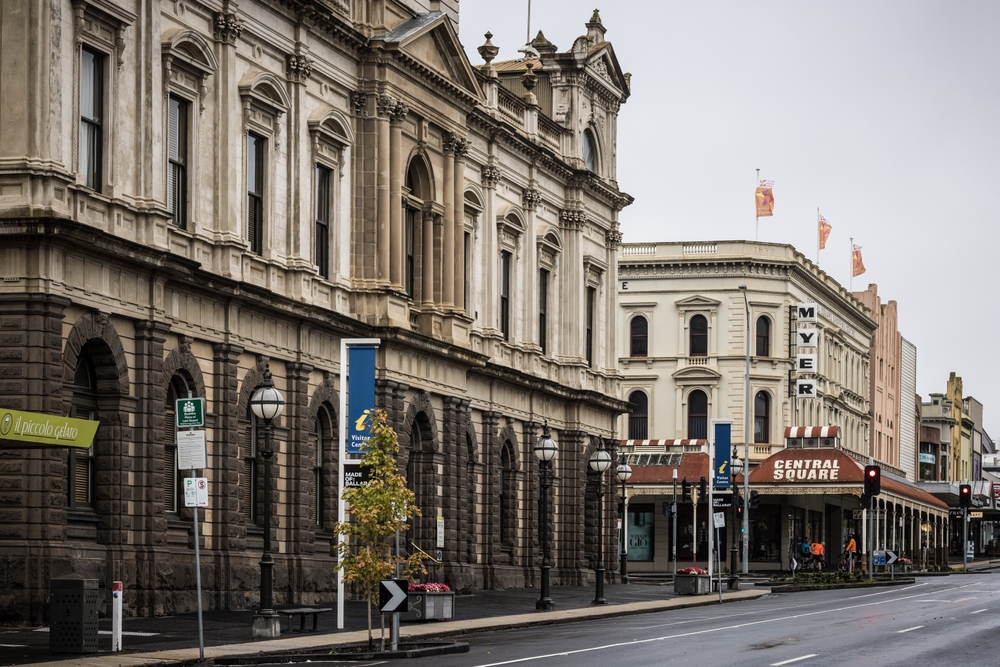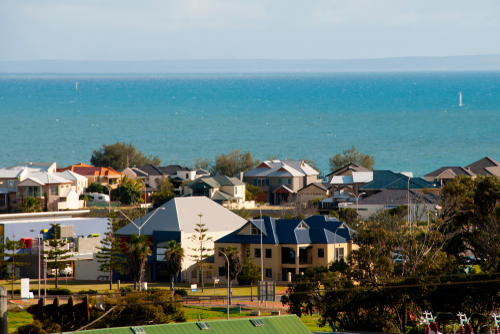The best (and worst) performing regional areas for property around Australia
While home values and rents have reached record highs across the regions, recovery has been slower compared with city property markets
Home values and rents continued to rise across most of Australia’s 50 largest regional markets over the past three months, with median prices and weekly rents at record levels in many areas. Dwelling values across regional Australia as a whole rose by 2.1 percent over the three months to April, according to CoreLogic’s latest quarterly regional market update. This was the fastest rate of growth in nearly two years and outpaced the capital cities, which rose by 1.7 percent.
“After falling 5.8 percent between May 2022 and January 2023, regional home values have seen a slower recovery compared to capital city values but have now regained the losses from the downturn to reach a new record high,” said CoreLogic economist, Kaytlin Ezzy. Many regional markets experienced runaway price growth during the pandemic as thousands of people left the cities. Many of the markets that experienced the greatest growth went on to experience the largest corrections.
While regional values and rents overall are at a record high, only 19 of the 50 regions analysed have returned or surpassed their record medians at this point in the recovery. The best performing areas were mostly in Western Australia and Queensland, while the worst performers were on the NSW coast and southern highlands, and in Victoria. In terms of weekly rents, 37 of the 50 regions are at record highs and 47 recorded increases in rents over the past three months.
“Housing affordability has continued to deteriorate through the start of 2024 for tenants and prospective home buyers alike. The outlook for regional housing markets will heavily depend on demographic trends, housing supply, localised economic drivers and the outlook for interest rates,” Ms Ezzy said.
Here is a summary of 10 regional markets, incorporating some of the strongest and weakest areas.
Batemans Bay, NSW
The south coast town recorded the highest increase in weekly rents over the quarter. Rents rose 6 percent to a median $570 per week. Home values rose 0.4 percent over the quarter to $743,712. Vendors are being forced to discount their original selling prices in Batemans Bay more than any other regional area. The average rate of discounting is 6.5 percent. Over the past five years, home values have risen 47.4 percent and rents have increased by 34.8 percent.
Ballina, NSW
Home values remain 15.9 percent below their April 2022 peak, which is the largest decline among the 50 regional markets at present. The median home value rose 1.1 percent over the quarter to $957,767. Weekly rents increased by 1.7 percent to a median $740 per week. Over the past five years, the median home price has soared 53.9 percent and weekly rents have lifted 35.5 percent.
Ballarat, VIC
Ballarat experienced the largest decline in home values over the three months to April. The median home price fell 2 percent to $541,815. Weekly rents increased by 0.4 percent to a median $425 per week. Over the past five years, the median home price has increased 30.9 percent and weekly rents have risen 22.3 percent.

Shepparton – Mooroopna, VIC
Home values rose 1.3 percent over the quarter to $456,331. Weekly rents increased by 1.2 percent to a median $472 per week. Over the past five years, the median home price has lifted 49.5 percent and weekly rents have accelerated 39 percent.
Geraldton, WA
Geraldton recorded the highest quarterly growth in home values of all 50 regions, up 8.8 percent to $394,251. Weekly rents increased by 3.6 percent to a median $475 per week. The rental yield is among the highest of the 50 regions at 6.2 percent. Over the past five years, the median home price has risen 61.4 percent and weekly rents have increased 54.6 percent.

Bunbury, WA
Bunbury recorded the fastest average selling time over the quarter at 14 days. It also had the second highest growth in weekly rents at 4.7% to a median $627 per week. Rents have been rising strongly for an extended period, with Bunbury recording the largest annual rise in rents at 16.4%. Home values rose 6.4 percent over the quarter to $576,979. Over the past five years, the median home price has leapt 68.3 percent and weekly rents have increased by 65.3 percent.
Busselton, WA
Busselton had the second-highest quarterly growth in home values of all 50 regions, up 7.7 percent to a median $812,050. It also recorded the second fastest selling times of the 50 regions at an average 16 days. Weekly rents increased by 2.8 percent to a median $723 per week. Over the past five years, the median home price has leapt 68 percent and weekly rents have soared 60.3 percent.
Sunshine Coast, QLD
Home values rose 3.2 percent over the quarter to $1,019,013. Weekly rents increased by 4.4 percent to a median $766 per week. Over the past five years, the median home price has grown strongly by 69.1 percent and weekly rents have lifted 46.8 percent.

Rockhampton, QLD
Rockhampton is a very affordable market but strong demand amid high interest rates is seeing home values lift at a rapid rate. Home values rose 5.1 percent over the quarter to a median $442,962. Weekly rents rose by 2.4 percent to a median $498 per week. Over the past five years, the median home price has skyrocketed 60.1 percent and weekly rents have charged 48 percent higher.
Launceston, TAS
Home values in Launceston rose 3.6 percent over the quarter to $534,227. Weekly rents increased by 2 percent to a median $491 per week. Over the past five years, the median home price has risen 56.7 percent and weekly rents have accelerated 33.5 percent.
A divide has opened in the tech job market between those with artificial-intelligence skills and everyone else.
A 30-metre masterpiece unveiled in Monaco brings Lamborghini’s supercar drama to the high seas, powered by 7,600 horsepower and unmistakable Italian design.
A 30-metre masterpiece unveiled in Monaco brings Lamborghini’s supercar drama to the high seas, powered by 7,600 horsepower and unmistakable Italian design.
When Lamborghini takes to the water, subtlety isn’t on the agenda. Unveiled at the Monaco Yacht Show, the Tecnomar for Lamborghini 101FT is a 30-metre superyacht that fuses Italian automotive theatre with cutting-edge naval engineering.
The model builds on the collaboration that began in 2020 with the Tecnomar for Lamborghini 63, a sell-out success that celebrated the marque’s founding year.
This new flagship pushes the partnership between Automobili Lamborghini and The Italian Sea Group to a grander scale, designed to deliver the same adrenaline rush at sea that drivers expect behind the wheel.
“The Tecnomar for Lamborghini 101FT redefines the concept of nautical luxury,” said Stephan Winkelmann, Chairman and CEO of Automobili Lamborghini.
“It is not only a yacht, but an affirmation of Italian excellence. The Italian Sea Group and Automobili Lamborghini share an exclusive clientele who are passionate about beauty, technology, and extreme performance.”
Design cues are unmistakably Lamborghini. The yacht’s sharp exterior lines echo the Fenomeno supercar revealed at Monterey Car Week, complete with Giallo Crius launch livery and signature Y-shaped lighting.
Inside, the cockpit and lounges mirror the DNA of Sant’Agata supercars through hexagonal motifs, sculptural seating and dramatic contrasts. With accommodation for up to nine guests and three crew cabins, indulgence meets practicality on every deck.
Performance is equally uncompromising. Three MTU 16V 2000 M96L engines and triple surface propellers generate a combined 7,600 horsepower, driving the yacht to 45 knots at full throttle, with a cruising speed of 35 knots. Two 35 kW generators provide additional efficiency and reliability, ensuring the yacht’s power matches its presence.
Mitja Borkert, Lamborghini’s Design Director, said: “With the Tecnomar for Lamborghini 101FT, we aimed to create a product that embodies the main design characteristics of our super sports cars. All the details, from the exterior to the colour, to the interior areas, recall and are inspired by Lamborghini’s DNA.”
Presented in scale at Monaco, the definitive Tecnomar for Lamborghini 101FT is scheduled to hit the water at the end of 2027. For those who demand their indulgence measured not only in metres but in knots, this is Lamborghini’s most extravagant expression yet.
By improving sluggish performance or replacing a broken screen, you can make your old iPhone feel new agai
An opulent Ryde home, packed with cinema, pool, sauna and more, is hitting the auction block with a $1 reserve.
























